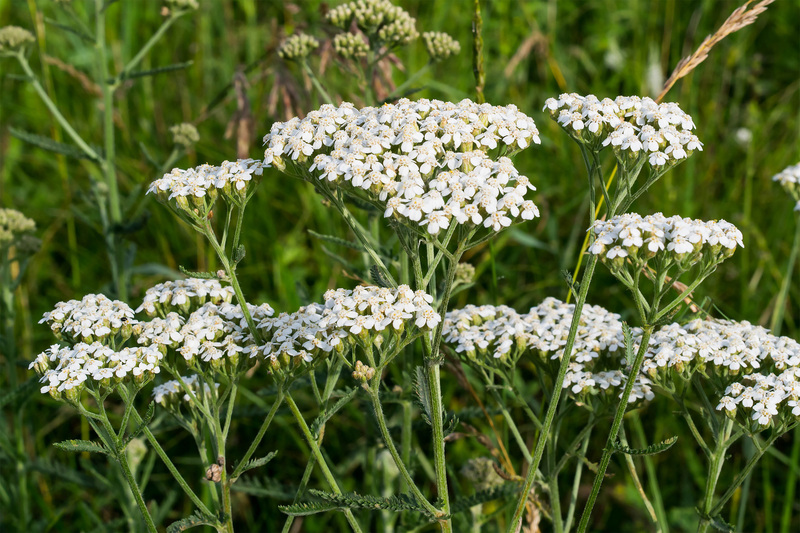Breathe New Life into Your Neglected Garden
Posted on 14/08/2025
Breathe New Life into Your Neglected Garden
Is your backyard looking a little worse for wear? Does it feel more like a wilderness than a welcoming retreat? If so, you're not alone. Many homeowners find themselves with a neglected garden that needs urgent attention. The good news is that breathing new life into your garden is not only doable--but also incredibly rewarding!
This comprehensive guide will walk you through every step needed to revitalize your neglected green space. From assessing the damage, clearing debris, and planning new layouts, to refreshing your soil and introducing vibrant plant life, you'll find practical tips and inspiring ideas to bring back the beauty of your garden. Let's dig in and discover how to transform your outdoor area into a lush paradise.

1. Assess the Current State of Your Garden
Before you can start on your garden transformation journey, take some time to evaluate what you're dealing with. Walk around your outdoor space, make notes, and consider the following:
- Is there accumulated debris, such as broken branches, old pots, or garbage?
- What's the state of existing plants--are there any that can be saved or must be removed?
- How is the soil quality?
- Are there structures, pathways, or borders that require repair?
- How exposed is the garden to sun, shade, and wind?
Taking photos can help you document your progress and remember problem areas as you proceed. Jot down your thoughts for easy reference as you make your garden restoration plan.
2. Clear the Clutter and Clean Up
An overgrown, neglected garden often harbors weeds, old leaves, broken pots, and other unwanted items. Begin your garden makeover by clearing away clutter:
- Remove all rubbish, dead plants, and any broken garden equipment.
- Prune overgrown shrubs, trees, and hedges.
- Pile up plant material you can compost elsewhere.
- Pull out weeds by the roots to prevent regrowth.
- Repair or remove broken fences, borders, or pathways.
This process may take a full day or more, but it lays the crucial foundation for further improvements. As you're cleaning up, your garden will start to feel lighter and more inviting already!
3. Plan Your Garden Makeover
It's tempting to start planting immediately, but a smart plan will help you create a vibrant, sustainable outdoor retreat. Spend some time thinking about what you want from your garden:
- Do you want a functional veggie patch, a family play area, or a flower-filled oasis?
- Would you like to install new seating, water features, or paths?
- Are you seeking a low-maintenance approach or are you eager for a lush, hands-on display?
Sketch your vision on paper--even a rough drawing can help you organize ideas and visualize what's possible. Group plants by their sun, water, and soil requirements to ensure healthy growth and easier maintenance.
Think About Zones and Pathways
Dividing your garden into distinct zones can make large or awkward spaces feel more manageable. Consider these ideas:
- Entertainment areas with seating and barbecues
- Vegetable or herb gardens for fresh produce
- Wildlife-friendly corners with native plants
- Shady retreats with benches or hammocks
Plan for clear paths or stepping stones to connect these zones and offer visual structure.
4. Restore the Soil for Better Growth
A common reason many gardens fall into decline is depleted soil. To breathe new life into your neglected garden, restoring your soil is essential:
The Basics of Soil Revitalization
- Remove compacted top layers and turn the soil using a fork or spade.
- Add organic matter such as compost, manure, or leaf mold to boost fertility.
- Test pH and add conditioners (lime or sulfur) if needed to adjust acidity or alkalinity.
- Mulch thickly around existing plants to conserve moisture and suppress weeds.
Healthy soil is the backbone of any thriving garden. Investing time in this stage pays off with robust plant growth and years of enjoyment.
5. Choose the Right Plants for Lasting Impact
When reviving a long-neglected garden, select plants that suit your local climate, soil, and lifestyle. Remember: the best gardens balance hardiness and beauty with ease of care. Consider the following options:
Low-Maintenance Options for Busy Gardeners
- Perennials: Lavender, daylilies, coneflowers, and hostas come back year after year and require minimal fuss.
- Groundcovers: Such as creeping thyme, vinca minor, or sedum, suppress weeds and fill empty spaces attractively.
- Native species: Plants adapted to your climate typically need less water and attention.
Add Color and Texture with Seasonal Varieties
To breathe fresh life into your garden every season, mix evergreen shrubs with flowering bulbs and annuals:
- Spring: Daffodils, tulips, and primroses
- Summer: Roses, hydrangeas, and sunflowers
- Autumn: Asters, ornamental grasses, and chrysanthemums
- Winter: Holly, winter jasmine, and hellebores provide color when little else does
Think about plant heights and shapes to create visual interest all year round. Incorporating a range of colors, leaf textures, and forms will give your garden a vibrant, dynamic feel.
6. Rejuvenate Your Lawn
A patchy, weed-filled lawn can drag down the look of the whole garden. Bring your lawn back to life with these steps:
- Rake up dead grass, leaves, and moss.
- Reseed bare patches with high-quality grass seed.
- Aerate compacted soil to encourage root growth.
- Fertilize with an appropriate lawn feed.
- Water deeply (but not excessively) each week.
- Keep mowing heights higher for a lush, resilient turf.
Lawn care takes patience, but with proper attention, you'll soon have a verdant carpet to complement your renewed garden beds.
7. Revamp Pathways, Borders, and Structures
Don't overlook your garden's hardscape. Faded paths, crumbling brickwork, or broken fences can make even the lushest beds look messy. Freshen up your garden's structure with these ideas:
- Pressure wash or repair existing paths and patios.
- Install new edging for clean separation between lawn and beds.
- Paint or stain fences and garden furniture for a modern look.
- Replace broken trellises or install new ones for climbers.
- Add solar lights along paths for evening ambiance.
Structural improvements are often the quickest way to add instant impact without major planting.
8. Create Inviting Seating and Relaxation Areas
Now that your garden is looking better, make it appealing for outdoor living. Breathe new energy into your neglected garden by incorporating comfortable seating and decorative touches:
- Add a bistro set or classic wooden bench in a sunny spot.
- Install a hammock, swing seat, or outdoor lounge for ultimate relaxation.
- Include cushions, planters, and lanterns for warmth and character.
- Create a firepit or BBQ area for gatherings with family and friends.
Your garden should be a destination--a place to read, dine, socialize, or just enjoy nature's calming influence.
9. Attract Wildlife and Build Biodiversity
Consider making your revived garden a haven for birds, bees, and butterflies. Biodiversity is essential for ecosystem health and can make your garden more enjoyable and resilient:
- Plant pollinator-friendly flowers such as lavender, foxgloves, or buddleia.
- Install bird feeders, baths, or nesting boxes.
- Leave a woodpile or log corner for beetles and hedgehogs.
- Reduce or avoid chemical pesticides to let beneficial insects thrive.
A wildlife-friendly garden bustles with life, adding movement, song, and natural pest control to your newly flourishing space.

10. Maintain Your Renewed Garden for Years to Come
Breathe new life into your neglected garden--and keep it thriving--with simple maintenance routines. Regular attention will prevent another decline and keep your outdoor sanctuary flourishing:
- Weed regularly before plants go to seed.
- Deadhead flowers to encourage more blooms.
- Fertilize and mulch beds at least twice a year.
- Prune shrubs and trees annually for shape and vigor.
- Check structures and furniture for wear and repair as needed.
Set aside 15-30 minutes each week for basic tidying--it's amazing how much difference this small investment makes over time.
Final Thoughts: Enjoy Your Revitalized Outdoor Space
Restoring a neglected garden is not a one-day task--but with enthusiasm and a step-by-step approach, anyone can breathe new life into a tired and overgrown outdoor area. The rewards go beyond beauty and fresh air: regular gardening reduces stress, supports local wildlife, and offers a profound sense of achievement.
Remember, progress is more important than perfection. Start small if you must, celebrate each milestone, and trust that your dedication will soon deliver a thriving, tranquil space. Whether you're planting flowers, vegetables, or simply creating a restful nook to unwind, your garden will thank you--and so will your family and friends.
So don your gloves, grab your tools, and breathe new life into your neglected garden--one inspired step at a time!
- Reclaim your lost green oasis.
- Transform chaos into calm and color.
- Create memories--and beauty--for years to come.
Share Your Garden Transformations!
Have you taken your own steps to revive a tired garden? Share your stories and tips with our gardening community and inspire others on their journey to transform any neglected outdoor space into a haven of life and beauty!

